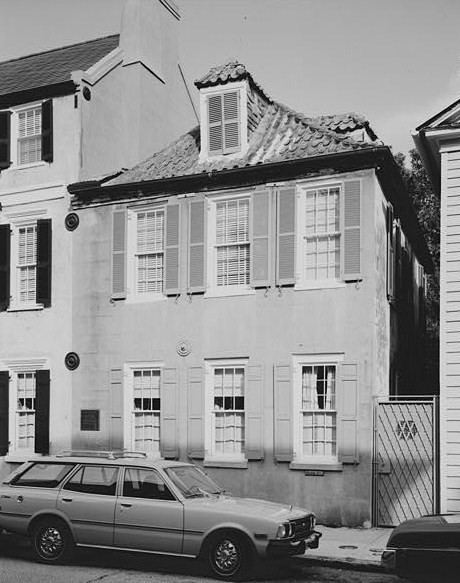Built 1919 Designated NHL November 11, 1971 Opened 1919 Added to NRHP 11 November 1971 | NRHP Reference # 71000749 Designated NHLDCP October 9, 1960 Area 1,214 m² | |
 | ||
Address 76 Church St, Charleston, SC 29401, USA Similar Clark Mills Studio, Robert Brewton House, Edward Rutledge House, Simmons‑Edwards House, Colonel John Stuart House | ||
The Dubose Heyward House is a historic house at 76 Church Street in Charleston, South Carolina. Now a wing of a larger house, this modest two-story structure was the home from 1919 to 1924 of author Dubose Heyward (1885-1940), author of Porgy, one of the first works to portray Southern African-Americans in a positive light. The house was declared a National Historic Landmark in 1971.
Description and history
The Heyward House is located in the Charleston Historic District, on the east side of Church Street south of Tradd Street. It is a two-story structure, with a tile roof and stuccoed exterior. It is now attached as a wing to the house immediately to its left, a three-story building. The house is not architecturally distinguished, and has principally been modified since the period of Heyward's residence by the removal of intervening walls with the adjacent house to create enlarged dining and bedrooms.
Dubose Heyward was born in 1885 into an aristocratic Charleston family, which fell upon hard times, leading him to engage in a number of low-wage jobs early in life. He was a significant early figure in the renaissance of Southern literature in the 1910s, helping found the Poetry Society of South Carolina in 1920. In 1925 he moved to North Carolina, where he wrote Porgy, his most significant claim to fame. It was unique at the time in present a southern African-American in a well-rounded and human light, and not as either a comic foil or propaganda piece. Porgy was the inspiration for George Gershwin's popular folk opera Porgy and Bess, cementing the character's place in American culture. Heyward lived in this house between about 1919 and 1924.
